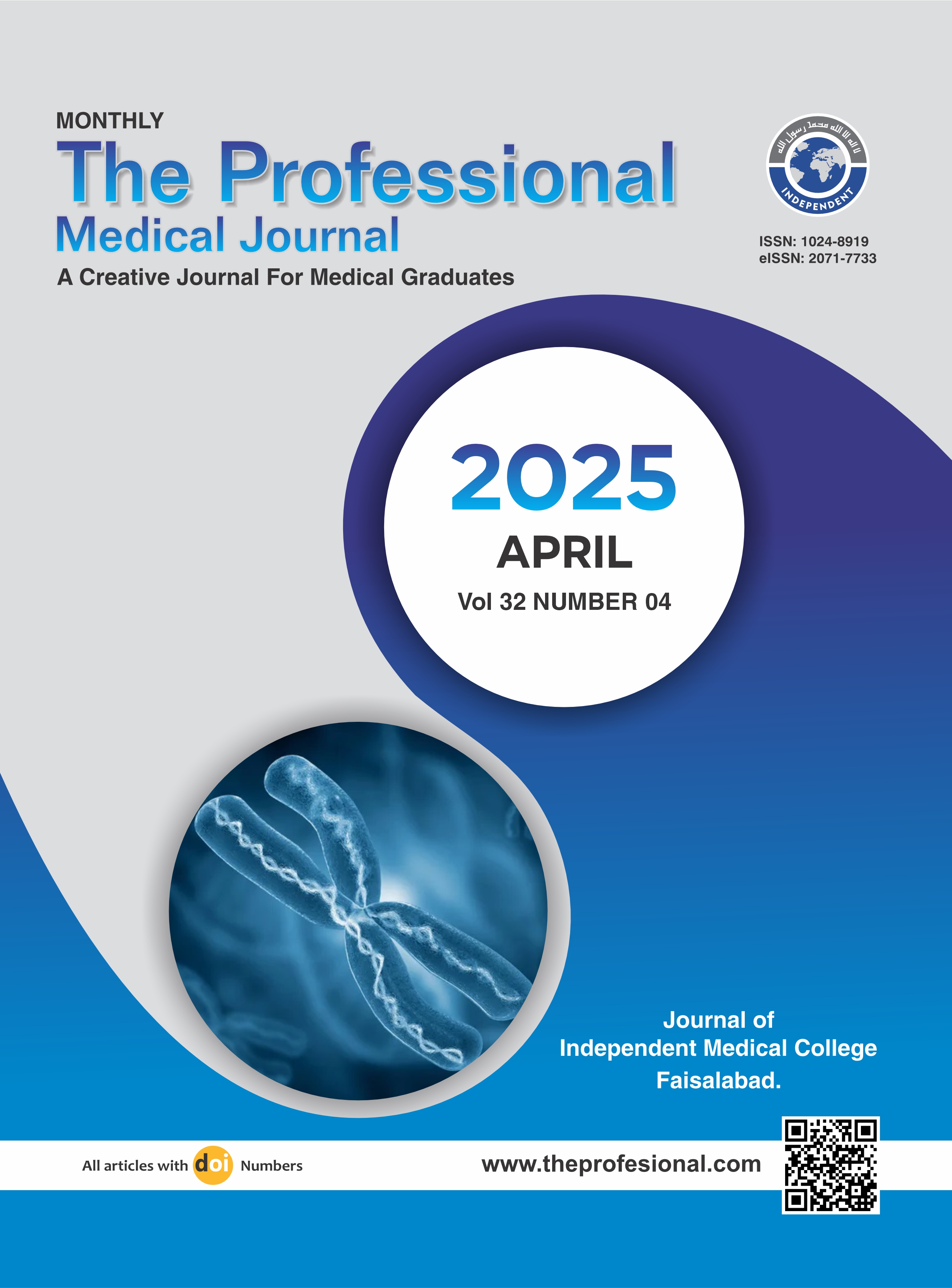Comparison of high scortal incision with standard inguinal incision orchidopexy in infants and children with palpable undescended testis.
DOI:
https://doi.org/10.29309/TPMJ/2025.32.04.8822Keywords:
Cryptorchidism, OrchidopexyAbstract
Objective: To compare high scortal incision with standard inguinal incision orchidopexy in infants and children with palpable undescended testis (UDT). Study Design: Randomized Controlled Trial. Setting: Department of Pediatric Surgery, Allied Hospital Faisalabad. Period: 17-10-2020 to 16-10-2021. Methods: Two groups were randomly assigned to children diagnosed with perceptible UDT, aged 9 to 18 months. In group A, orchidopexy was performed through a high scrotal incision, while in group B, it was performed using the standard two-incision inguinoscrotal procedure. Length of surgery and hospital stay, scrotal hematoma, infection of wound, atrophy of the testicles, and secondary ascent were the variables that were used to compare the groups. Results: The children in group B had an average age of 12.18±2.59 months, while those in group A had an average age of 12.66±2.71 months. Fifty-one children (or 51% of the total) had undescended testicles on the right side, whereas forty-nine children (or 49% of the total) had them on the left. Whereas 58(58%) children had a canalicular appearance, 42(42%) showed testes at exterior ring. Both groups had significantly different mean operating times: 27.26 ± 3.93 min for group A and 34.72±3.25 min for group B (p < 0.0000). Groups A and B had significantly different mean hospital stays, with group A measuring 1.10 ± 0.30 minutes and group B 1.40±0.49 minutes (p < 0.0000). Two individuals (4% of the total) in group A and 8(16%) in group B had scrotal haematoma (p = 0.046). Three patients (6% of the total) in group A and fourteen people (14%) in group B acquired wound infections (p = 0.159). In addition, two patients (4.0%) in group A and three patients (6.0%) in group B experienced secondary ascent (p = 0.339). Conclusion: In conclusion, this study's data show that orchidopexy utilizing the scrotal incision strategy is preferable than the inguinal incision method for palpable UDT treatment.
Downloads
Published
Issue
Section
License
Copyright (c) 2025 The Professional Medical Journal

This work is licensed under a Creative Commons Attribution-NonCommercial 4.0 International License.


